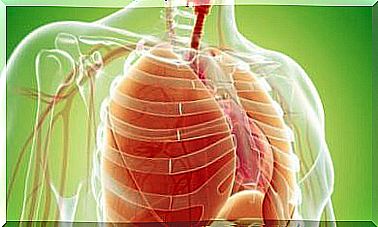Non-steroidal Anti-inflammatory Drugs
Non-steroidal anti-inflammatory drugs are known by their acronym NSAIDs. They are drugs that, due to their mechanism of action, have several applications such as inducing analgesia, reducing fever and inflammation, as well as an antiplatelet effect.
NSAIDs are one of the most prescribed medications worldwide. Due to their analgesic effect they are used in rheumatic pain, in inflammatory and degenerative diseases. In addition, they are indicated in non-rheumatic diseases such as migraine, dental pain and in general, in any inflammatory process.
Its use is very widespread, even as a self-medication. This is because they are drugs that are available without a prescription or medical supervision, with the consequent potential risk of side effects.
It is also important to note that no NSAID anti-inflammatory pain reliever is better or safer than another and should not be taken if you are taking another prescription drug at the same time, as they can interact and cause problems.
How do non-steroidal anti-inflammatory pain relievers work?

Nonsteroidal anti-inflammatory drugs, once absorbed, and after passing through the liver, bind in a high percentage to a plasma protein called albumin.
This fact is important, since if the patient is in a hypoalbuminemic situation, the drug dose must be adjusted since there will be more free drug in the blood that is not bound to proteins and, therefore, the effect will be greater.
So it is the free fraction of the drug that will trigger the effects of non-steroidal anti-inflammatory painkillers, but how?
The mechanism of action of these drugs is not unique, so they can trigger their function in the following ways:
- Inhibiting the enzyme cyclooxygenase (COX) : it is the main mechanism. By inhibiting this enzyme, the synthesis of prostaglandins, substances that act as mediators of inflammation, are inhibited.
- Non-prostaglandin-mediated effects, such as inhibition of neutrophils in inflammation or inhibition of pro-inflammatory mediators such as cytokine-induced nitric oxide.
- Apoptosis : prostaglandins inhibit apoptosis and this fact may explain, at least in part, that certain NSAIDs are related to a reduction in the risk of some types of cancer.
Classification of NSAIDs
Non-steroidal anti-inflammatory drugs can be classified according to whether they are selective for COX-2 or not. Therefore, on the one hand there are non-selective NSAIDs and on the other the selective of COX-2.
Within the non-selective we can find the following groups:
- Salicylates : acetylsalicylic acid or aspirin.
- Pyrazolones : metamizole.
- Para-aminophenols : paracetamol
- Propionic acid : ibuprofen.
- Acetic acid : indomethacin.
- Oxicams : piroxicam
- Anthranilic acid: meclofenamic acid.
As for the selective COX-2 NSAIDs, there are meloxicam, nimesulide, etodolac and coxibs such as celecoxib.
Pharmacokinetics of NSAIDs
They are drugs that are absorbed quickly. The main route of administration is oral, but it also accepts topical, intravenous and rectal administration. Once absorbed, they reach the maximum concentration in the blood between 2 and 3 hours.
In addition, it is advisable to administer NSAIDs together with food, since these drugs can damage the intestinal mucosa.
They are drugs that, for the most part, bind a high percentage (around 95-99%) to the plasma protein albumin. This fact is important, since this strong binding to albumin can lead to many interactions with other drugs that also have this characteristic.
They undergo hepatic metabolism and some of them have active metabolites. In addition, almost all have some degree of enterohepatic circulation. Once metabolized, they are excreted via the kidneys, so caution must be exercised in patients with kidney failure, as the doses would have to be adjusted.
Adverse reactions

All drugs are capable of developing side effects after a dose. It is important that the risks and benefits of a medicine are well understood before taking it.
Non-steroidal anti-inflammatory drugs produce adverse effects at the gastrointestinal level. This can lead to compliance issues in the administration of these anti-inflammatory pain relievers. In addition, they are also nephrotoxic, which means that they can cause kidney problems.
Other common adverse reactions of these medications are:
- Arterial hypertension.
- Heart problems.
- Eruptions
- Fluid retention.
Finally, consider the importance of consulting your health specialist before taking this type of medication. Knowing its adverse effects and applying it properly is the best way to achieve therapeutic success.








